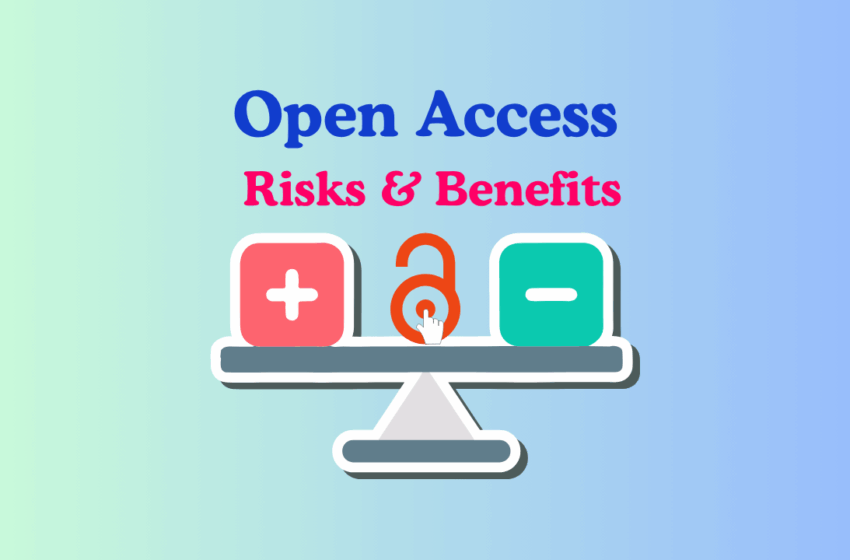Benefits and Challenges of Open Access Publishing: A Guide for Authors

With the publishing industry experiencing a shift towards open access from subscription-based models, more and more researchers are choosing to publish their research in open access journals. Unlike traditional publishing where scientific content is paywalled, open access publishing makes research available to all. However, it is important for authors to understand how the open access publishing is funded and how they can utilize the opportunities while tackling the challenges.
Benefits for Authors in Open Access Publishing
How to Publish in Open Access Journals
Challenges Authors Face in Open Access Publishing
Best Practices for Publishing in Open Access Journals
Benefits for Authors in Open Access Publishing
As an author, you might wonder: “How does publishing in open access journals benefit me?” And there are several benefits that authors do enjoy!
1. Increased visibility & reach
Open access papers are more easily accessible than paywalled content, which means that your research has a wider audience that includes policymakers, clinicians, and even non-academics. In other words, your research gets better visibility and creates impact outside the academic circle.
2. Higher potential of citation
The ease of availability of open access papers leads to more usage and citations, improving the Altmetric attention scores. Studies have reported that the “open access citation advantage” can be sustained over years1, and this trend has been observed across various disciplines.
3. Faster dissemination
Open access publishing typically ensures immediate publication of research papers without (or with minimal) embargo period. While traditional publishing could take weeks, months, or even years, open access publishing does not involve such long waiting periods and your research is made publicly available soon after submission.
4. Retaining copyright & licensing
Typically, research papers in open access journals are published under a creative commons (CC) license (e.g., CC BY). This means that the work can be freely shared and adapted by others, provided the original authors of the paper are correctly credited. This in turn leads to enhanced usage and citations, as highlighted earlier.
How to Publish in Open Access Journals
With all these benefits and opportunities for authors, is publishing in open access journals free? Well, not exactly. Open access journals follow various publishing models wherein funding occurs in different ways.
Gold Open Access
Gold open access publishing is the most common publishing model, where journals ask for article processing charges (APCs) after accepting the research paper for publication. These APCs can be paid either by the authors themselves or by institutions/funding agencies that the authors are associated with.
Diamond Open Access
This model is similar to the gold open access publishing, except that neither the authors nor the readers are charged. Essentially, diamond open access model is community-driven and journal-led publishing, and the costs are often covered via crowdfunding and sponsorships.
Remember, because of their limited budget, these journals can be highly selective of the research published in their publications. So getting your submission accepted could be more challenging than that in the Gold open access model.
Hybrid Open Access
In this model, subscription-based journals allow authors to make their individual papers open access while keeping other content paywalled. You get to choose between paying additional fee to make your research open access or publishing your research in the traditional subscription-based format.
This model is often criticized for “double dipping” as it charges authors for making their content freely available as well as a subscription fee from their readers for accessing the paywalled content. However, an advantage for authors is that they get to publish in reputed subscription-based journals while reaping the benefits of open access publishing,
Challenges Authors Face in Open Access Publishing
Despite its increasing popularity, open access publishing presents several challenges for authors.
1. Burden of APCs & inequity
Open access publishing is meant to support authors navigate the gatekeepers of publishing. However, some journals charge high APCs, which authors, especially those from low- or mid-income countries, cannot afford. At times, this creates a disparity between funded and unfunded researchers2 that does not promote equity.
2. Lack of transparency
Another barrier is the hidden charges that are often revealed at an advanced stage of publication, inconveniencing authors. Some journals add value add tax (VAT) to existing APCs, increasing the overall cost to authors. Although some journals waive author fees, the policies are not explained clearly making it difficult for authors to navigate the publishing process.
3. Geographic & institutional disparities
Owing to high APCs, early-career researchers (ECRs), authors from low-income nations, or researchers from less-funded institutions tend to miss out on publishing in open access journals.
4. Journal quality concerns
The problem of predatory journals becomes all the more dangerous in open access publishing! Several predatory publishers could charge high author fees in the name of open access publishing, misleading or duping authors. Moreover, publishing in poor quality journals could impact author reputation negatively.
Best Practices for Publishing in Open Access Journals
Considering its benefits and challenges, the question remains: “Should I publish in open access journals?” Well, if you take precautions and evaluate the authenticity of your target journal thoroughly, open access publishing can be a good option. Here are some best practices to follow when publishing in open access journals.
- Always read the journal policies carefully and completely before deciding to submit your research to the journal. If any of the policies or guidelines appear unclear, write to the journal editor for clarification.
- Seek advice from your seniors who have previously published in open access journals. You may even write to some of the authors whose papers you have frequently read in open access journals requesting them to share their experience. Based on their input, you can determine which open access journal and publication model are suitable for you.
- Watch out for the telltale signs of predatory publishers! Journals that invite you for publishing, websites that do not provide clear contact information or a physical location, hidden publishing fees that are not apparent at first glance, frequent spelling and grammatical mistakes on their website—all these are red flags, and you should avoid submitting to such journals.
- Look for fee waiver policies and check if you are eligible for it. If you are a funded researcher, verify whether your research grant or funding agency covers the APCs. Here too, check whether you will receive full or only partial APC coverage from your grant.
References
1. Open access citation advantage https://link.springer.com/article/10.1007/s11192-018-2663-4
2, Equitable open access publishing: https://pmc.ncbi.nlm.nih.gov/articles/PMC8691877/






